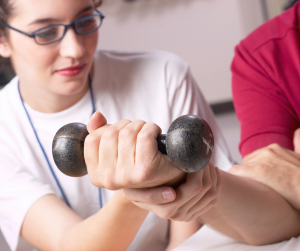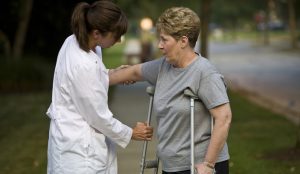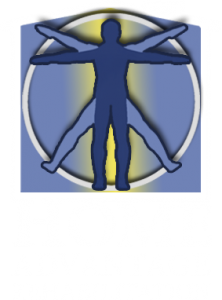We are UNIQUE in the respect that we are MULTIDISCIPLINARY, and we provide PT, OT, and SLP. This allows each rehabilitative professional the ability to focus on their area of expertise, providing comprehensive rehabilitation, which is centrally coordinated from our office, and overseen by our clinical coordinator, who also happens to be a therapist.
Recent Blog Posts From Our In-Home Occupational Therapy On Long Island Experts
What Is Occupational Therapy?

When injuries or conditions make completing everyday tasks difficult, it diminishes your quality of life. Not being able to accomplish everyday chores you were once capable of can be infuriating, but Home Advantage Rehabilitation Solutions is here to help! We offer in-home occupational therapy on Long Island to help assess your needs and correct any issues. Continue reading to see why this form of treatment may be perfect for you.
Occupational Therapy Defined
Occupational therapy is a form of treatment used to help people of all ages participate in everyday activities they both want and need to accomplish. Developmental disabilities and physical injuries can both impede one’s ability to function normally, but the goal of our occupational therapist is to help patients adapt to and overcome these issues. The most common uses of in-home occupational therapy on Long Island include:
Assisting children with disabilities participate in school and handle social situations.
Assist patients to regain strength and skills lost due to injury.
Support older adults through an aging process that involves physical and cognitive transitions.
A Session Of In-Home Occupational Therapy On Long Island
If you are unfamiliar with occupational therapy, you may be a bit nervous about choosing this form of treatment. To eliminate your worries, our staff would like to shed some light on what you can expect during a session of in-home occupational therapy on Long Island. Once our staff has arrived at your door, you can expect the following to take place:
1 – Our occupational therapist will perform an individualized evaluation to help determine patient goals.
2 – Following the evaluation, a customized intervention plan is created to help increase the abilities of the patient. This plan may include teaching patients how to use assistive devices or having them perform speech and memory improving activities.
3 – The outcomes of the intervention plan are monitored to track progress and see if any changes need to be made.
At Home Advantage Rehabilitation Solutions, we want to help all of our patients function to the best of their abilities. Through the use of our in-home occupational therapy on Long Island, the outlook of increasing your functionality will be greatly improved. Contact us today to get the help you or a loved one needs!
The Importance of Strength Training for Senior Citizens

Elderly people are often disheartened by their lack of physical stamina. Even if someone’s endurance is not what it once was, there is hope to improve his or her way of life. By making some changes to their daily lives to include physical activities, elderly people can improve their strength and coordination.
It is no secret that we lose muscle mass as we age. However, we do have the ability to slow the rate with which we lose our strength. Elderly people who do not exercise see a much more rapid decrease in strength and muscle mass than those who do. By adding a strength training program to their lives, elderly people can remain strong and improve their lives in the process.
When we work out we strengthen our muscles, bones, and tendons by increasing their size and density. When we don’t work out the opposite happens. Our muscles and bones can actually shrink and become less dense when don’t use them and this happens at a much faster rate as we age. Even elderly people with poor strength can see results relatively quickly if they begin a proper strength training program.
One of the main reasons that older people choose not to participate in strength training is that they fear the workouts will be too strenuous and cause further complications to exist health conditions such as arthritis. Strength training can have negative effects, especially for beginners. Therefore it is wise to consult a doctor before starting and to come up with a plan to start slowly.
In-Home Occupational Therapy On Long Island
A typical exercise program consists of both free weight and machine training that work to strengthen both the upper and lower body. It is a good idea to alternate between different body parts when working out and to work out at least three days a week. Just by adding a simple strength training program such as this, a person of any age can improve his or her overall health. Elderly people can have the added benefit of improving their everyday lives by making simple tasks easier to perform.
The staff at Home Advantage Rehabilitation will be happy to help set up a plan that is right for you. Give us a call today at 516-459-9439!
How to Choose the Proper Mobility Aid

When an injury limits your mobility, there are certain aids that can help. Canes, crutches, walkers and wheelchairs can all be helpful, however, it is important to know which is appropriate for your specific situation. To avoid choosing incorrectly, you should always consult a professional.
Mobility aids are typically chosen based on the type and severity of an injury as well as the overall fitness of the patient. Crutches may be useful in helping someone with a broken leg, however, they require a good deal of upper body strength. For someone with minimal upper body strength, a wheelchair or walker may be more appropriate. These aids are crucial to injured people’s overall health as they allow them not only to move around but also to get out of bed on their own. Just by standing up people can improve breathing efficiency, reduce the loss of bone density and speed up the overall recovery process.
The easiest mobility aid to use is the cane. Canes give people balance and stability and make walking easier by taking the pressure off of an injured leg. However, people with severe balance issues tend to use walkers rather than canes as they provide more support. While canes can be very useful, they should not be used for weight-bearing purposes. There are several types of canes and it is important to ask your doctor which one is right for you.
Crutches allow people to completely eliminate pressure to one leg. Although they require some upper body strength, crutches are relatively easy to use and allow people to maneuver around obstacles with ease. There are different types of crutches made with different materials. Aluminum crutches are lighter than traditional wooden crutches and are therefore easier to use.
In-Home Occupational Therapy On Long Island
Wheelchairs are typically reserved for people who have lost all weight-bearing capabilities. While some people may think that using a wheelchair is embarrassing, this type of mobility aid can promote independence for people who previously had no other way of getting around. Overall, mobility aids can have a profound impact on people’s lives even if they only require them for a short period of time. If you have difficulty getting around, consult your doctor about the type of mobility aid that’s right for you.
In-Home Occupational Therapy On Long Island

WHAT IS OT?
A holistic healthcare profession aimed at promoting health by enabling clients to perform meaningful and purposeful activities across a lifespan. OT’s take a thorough history, provide a physical and cognitive examination to identify deficits and develop a treatment plan. The goal is to maximize the daily living and work skills of their clients with physical, mental or developmental conditions. Additionally, OT’s seek to adapt to the environment, modify tasks, teach skills, and educate clients and their families to achieve their goals.
HOW DO OT’s TREAT?
ADL training Adaptive equipment
Therapeutic exercise Manual techniques (soft tissue massage, myofascial release, mobilization)
Neuromuscular Reeducation
Therapeutic activity
Modalities (electrical stimulation, ultrasound, moist heat/ice)
WHAT CONDITIONS DO OT’s TREAT?
Hand Disorders
Carpal Tunnel Syndrome
Fine motor/dexterity
Orthopedic
Joint Replacements
Total knee replacement
Total hip replacement
Total shoulder replacement
Arthritis
Rheumatoid
Osteoarthritis
Fractures
Ligamentous/Muscle injuries
Neurologic
CVA (stroke)
MS (multiple sclerosis)
Parkinson’s
Neuropathy
SCI (spinal cord injury)
TBI (traumatic brain injury)
ALS (Lou Gehrig’s disease)
Cardiopulmonary
CHF(congestive heart failure)
MI(heart attack)
COPD (emphysema, chronic bronchitis)
General deconditioning
Amputee
BKA (below the knee)
AKA (above the knee)
Upper extremity
Contact Our In-Home Occupational Therapy On Long Island Experts
 Home Advantage Rehabilitation Solutions (HARS) – in-home occupational therapy on Long Island, was founded in 2008 by Kevin Mangan, PT, DPT, and Michael Marzano, OTR/L. Together they have over 45 years of combined experience in home-based rehabilitation. HARS was formed when Kevin and Mike, both having extensive experience working for Certified Home Health Agencies (CHHAs), realized there was a large population of patients who did not qualify for CHHA services but were unable to attend outpatient therapy. Today, HARS has over 45 therapists serving people in their homes throughout Nassau, Suffolk, and Queens. We accept most major insurances.
Home Advantage Rehabilitation Solutions (HARS) – in-home occupational therapy on Long Island, was founded in 2008 by Kevin Mangan, PT, DPT, and Michael Marzano, OTR/L. Together they have over 45 years of combined experience in home-based rehabilitation. HARS was formed when Kevin and Mike, both having extensive experience working for Certified Home Health Agencies (CHHAs), realized there was a large population of patients who did not qualify for CHHA services but were unable to attend outpatient therapy. Today, HARS has over 45 therapists serving people in their homes throughout Nassau, Suffolk, and Queens. We accept most major insurances.





